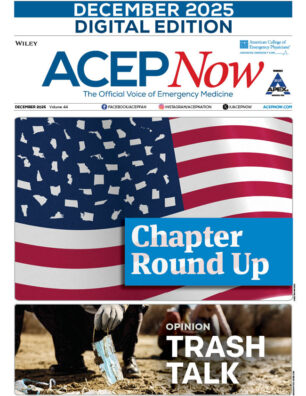Use of three evidence-based practices appears to substantially increase survival of veterans with Staphylococcus aureus bacteremia (SAB), new research suggests. In a retrospective observational study of nearly 37,000 patients with SAB, 30-day all-cause mortality dropped significantly in concert with study hospitals’ increasing use of appropriate antibiotic therapy, echocardiography, and consultation with infectious disease specialists.
“We believe this makes a strong case for building care-quality metrics to promote use of these evidence-based care processes and improve the care of this serious infection,” first author Dr. Michihiko Goto, of the Iowa City Veterans Health Care System and the University of Iowa, in Iowa City, told Reuters Health by email. The findings were reported in JAMA Internal Medicine, online September 5.
SAB is common and often associated with poor outcomes, with earlier reports citing mortality rates ranging from 20 percent to 30 percent, the researchers noted.
“Previous smaller studies showed several care processes were associated with better outcomes, but it has never been investigated whether they can improve population-based outcomes, (and) it was not clear whether those processes have synergistic or additive benefits,” Dr. Goto said.
In the new study, he noted, the Veterans Health Administration (VHA) “gave us a unique opportunity by providing nationwide microbiology test data, which allowed us to create a large cohort and look into this important question.”
Dr. Goto and colleagues analyzed data from patients with a first episode of SAB who were treated at 124 VHA acute-care hospitals in 2003 through 2014. Of the 36,868 patients (98 percent male; mean age, 66.4), 52.4 percent were infected with methicillin-resistant S. aureus (MRSA) and 47.6 percent had methicillin-susceptible S. aureus (MSSA).
SAB cases in this cohort dropped from 3,717 in 2003 to 2,524 in 2014, largely due to decreases in health care-associated and hospital-onset bacteremia. After adjustment for age, body-mass index, methicillin susceptibility of the S. aureus isolate, various comorbidities, and other factors, 30-day all-cause mortality decreased significantly from 23.5 percent in 2003 to 18.2 percent in 2014. Mortality trends for MRSA and MSSA were similar.
In 2003, 37.4 percent of SAB patients had care that included a consultation with an infectious disease expert, increasing significantly to 68 percent of SAB patients in 2014. The proportion of patients who received appropriate antibiotic therapy was 66.4 percent in 2003 versus 78.9 percent in 2014, and rates of echocardiography increased from 33.8 percent to 72.8 percent during the same period (P<0.001 for both trends). The percentage of patients who received all three care processes increased significantly from 16.1 percent in 2003 to 52.2 percent in 2014.
“Moreover, there was evidence of a dose-response relationship between the number of care processes a patient received and mortality,” the researchers write. Based on the study’s findings, they estimate that 57.3 percent of the decrease in risk-adjusted mortality could be attributed to increased use of care processes.
“Perhaps the most surprising finding was that it was clear that the more evidence-based care processes a patient receives, the lower the likelihood of death,” Dr. Goto said. Although he and his colleagues expected this dose-response relationship to some degree, “it was even more impressive than we intuitively expected,” he said.
Given that nearly half (47.8 percent) of patients did not receive all three processes in 2014, stepping up use of these strategies might further improve SAB outcomes, the researchers said.
“The management of Staphylococcus aureus bacteremia, for all its frequency and severity, remains remarkably unencumbered by data,” Dr. Vance Fowler, an infectious disease specialist at Duke University Medical Center, in Durham, North Carolina, told Reuters Health by email. The new study “makes an important step” toward addressing this deficit, he said.
“What I found particularly reassuring was that while each of the three strategies was independently associated with improved outcome, there was also an additive effect so that the more of the three treatment strategies were employed, the better the patient outcome,” said Dr. Fowler, who conducts research on determinants of outcome in patients with SAB but was not involved in the current study.
He noted that the study’s results “are profoundly gratifying personally,” because his own research in the past two decades has demonstrated the importance of echocardiography, consultation with an infectious disease specialist, and antistaphylococcal beta-lactam antibiotics when susceptibilities allow as interventions for SAB. The study’s findings “inform the medical community that these strategies should be regarded as standard of care wherever they are available,” Dr. Fowler said.
Pages: 1 2 | Multi-Page





No Responses to “Drop in Deaths from S. aureus Bacteremia Linked to Evidence-Based Care”